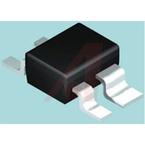下载

© Semiconductor Components Industries, LLC, 2012
July, 2012 − Rev. 2
1 Publication Order Number:
AND9089/D
AND9089/D
A Guide to Choosing the
Right Ultra - Low I
Q
Low
Dropout Linear Voltage
Regulators
Introduction
One of the most important challenges today in designing
electronic applications is to minimize the power
consumption of the system. To accomplish this, most
systems utilize various low power modes which help to
minimize the overall power consumption. When utilizing
various modes of operation, system supply currents can
easily vary from single mA or even fractions of mA in sleep
to tenths or hundreds of mA in full power mode. Low
Dropout Linear Voltage Regulators (popularly referred to as
LDOs) are common building blocks in any power system
and the choice of linear regulator can have an important
impact on the overall system power consumption. To
complicate this choice, it is often required that the LDO not
only feature ultra−low quiescent current but should
additionally provide good dynamic performance to assure
stable, noise−free voltage rail, suitable for sensitive circuits.
These requirements are often mutually exclusive and unveil
a real challenge for the IC designers. As a consequence not
many LDOs on the market can satisfy both these
requirements simultaneously.
The following paper discusses the tradeoffs between
achieving low I
Q
and good dynamic performance when
choosing an LDO, and some techniques that are now used to
achieve an acceptable balance.
Factors to Consider
When choosing a linear regulator for a low power
application, engineers predominantly search for ultra−low
I
Q
LDOs
1
meeting their input voltage and output current
requirements. Whereas making a selection according to the
I
Q
specification gives some good initial information about
the LDO’s current consumption, two devices with equal or
very similar I
Q
can dramatically differ in terms of dynamic
performance. I
Q
can become rather a virtual parameter if we
recall that it defines the ground current consumption without
any load applied. In practical cases it may be more
appropriate to look at the ground current consumption at
very light loads from single mA to tenths or hundreds of mA.
It is interesting to note that after evaluating different LDO
products from different manufacturers, it was not
uncommon to find that the I
Q
specification given in the
datasheet was for the perfect no load condition, and not the
more realistic output load of 10 mA to 100 mA. Sometimes
it may also be relevant to know the ground current behavior
with respect to the input voltage or temperature. Apparently
the ground current of some regulators available on the
market increases considerably if the input voltage decreases
and the LDO enters into its dropout region. This may be an
important factor in choosing a product for battery operated
equipment. Additional unexpected current consumption can
have a negative impact on a product by considerably
shortening its battery life. These undesired effects can be
especially severe if the application spends most of the time
in idle or sleep state drawing a minimum current. The
designer should always read the datasheet notes for the I
Q
specification and where possible, examine the associated
graphs of I
Q
vs. I
LOAD
before making the decision to choose
a particular LDO.
1. By specifying ultra−low I
Q
here we refer to regulators with I
Q
< 15mA.
http://onsemi.com
APPLICATION NOTE








